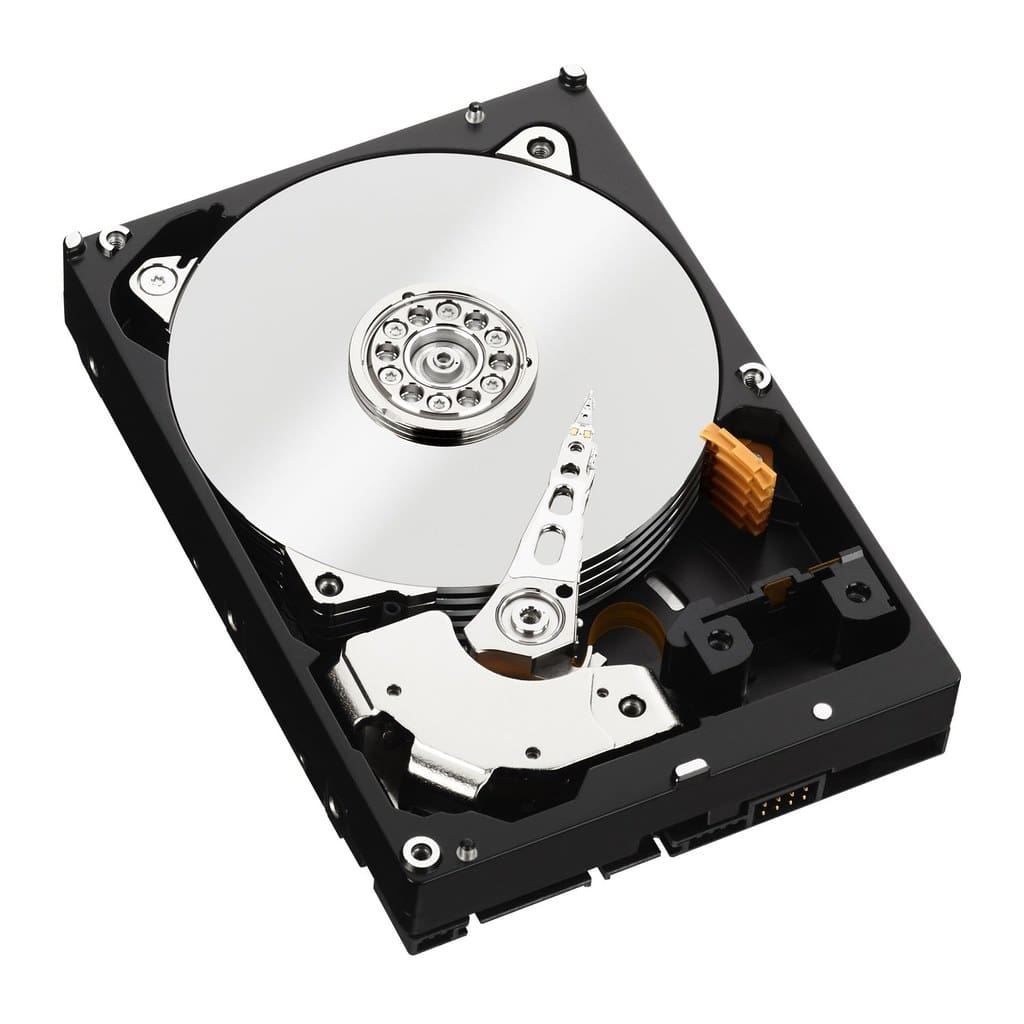Hard drives are the extra storage hardware components that are used to store various data inside them. We can store photos, videos, applications, music, etc on hard drives.
And therefore, hard drives are divided into two variants: the Internal Hard Drive and External Hard Drive. Both of these hard drives have their speciality and functions that are distinct from each other.
Here, we are going to discuss the differences elaborately.
Key Takeaways
- An internal hard drive is inside a computer or laptop for storage and running programs. In contrast, an external hard drive is connected to a computer via a USB cable and is used for backing up files or expanding storage capacity.
- An internal hard drive is faster and more reliable than an external hard drive, which may be prone to physical damage or corruption.
- An internal hard drive requires technical expertise to install and replace, while an external hard drive is easy to connect and disconnect.
An Internal Hard Drive vs An External Hard Drive
The difference between an internal hard drive and an external hard drive is the placement of the respective hardware. Generally, an internal hard drive is situated inside a computer; therefore, we can not see it unless we open the screws of the computer. On the other hand, generally, an external hard drive is situated outside a computer that is connected externally with the help of a cable, and therefore we can see an external hard drive.

An internal hard drive refers to the storage hardware that saves data and can easily be accessed through the data that is saved inside the computer without any problem.
Generally, an internal hard drive is situated inside a computer, and therefore we can not see it unless we open the screws of the computer. An internal hard drive is also commonly termed as the main or primary memory.
On the other hand, an external hard drive refers to the storage hardware that saves the data that is transferred from the internal hard drive to it externally from the computer.
Generally, an external hard drive is situated outside a computer that is connected externally with the help of a cable, and therefore we can see an external hard drive. An external hard drive is also commonly termed secondary memory.
Comparison Table
| Parameters of Comparison | An Internal Hard Drive | An External Hard Drive |
|---|---|---|
| Definition | The hardware that stores the data inside the computer is commonly known as an internal hard drive. | The hardware that stores the data outside the computer is commonly known as an external hard drive. |
| Memory Type | Generally, an internal hard drive is termed as the main or primary memory. | Generally, an external hard drive is termed secondary memory. |
| Placements | An internal hard drive is placed inside a computer. | An external hard drive is placed outside the computer. |
| Assessments | It is easy to access through an internal hard drive as it is already connected to the computer. | It is a bit complex and time-consuming to access through an external hard drive as it has to be externally connected to the computer with the help of a cable. |
| Portability | An internal hard drive can not be portable from one place to other. | An external hard drive can easily be portable from one place to the other. |
| Storage Capacity | An internal hard drive has a great storage capacity in it. | An external hard drive has comparatively lesser storage capacity. |
| Speed | The internal hard drives have better and faster speeds than the external hard drives. | The external hard drives have comparatively slower speeds than the internal hard drives. |
| Advantages | An internal hard drive has several advantages such as it has great storage capacity, it is easily accessible, they are cheaper, great speed, etc. | An external hard has several advantages such as its backup drives, it can be easily portable, it gives extra storage to store the data, etc. |
| Disadvantages | An internal hard drive has several disadvantages such as it is not portable, it is very big in size, energy efficiency, inevitable failure, etc. | An external hard drive has several disadvantages such as it has slow speed, it easily getting lost or broken, limited storage, etc. |
What is an Internal Hard Drive?
In computers, there is hardware where we can store and save our data, such as photos, videos, music, movies, etc.; therefore, that hardware is known as an internal hard drive.
It helps us to store the memories or the works people would like to access whenever required. Hence, it is termed as the main or primary memory.
It is known to be the primary memory because it is the memory we can find inside the computer since an internal hard drive is placed inside it.
An internal hard drive is easy and time-saving to use, as it is initially connected to the computer. We only need to click on the files that we have saved earlier on the desktop. It’s just a click away to find our data. An internal hard drive is not portable.
This is because it was initially attached to the computer when we bought it. We can only take out the hard drive to repair it when it shows some issue.
Otherwise, we need not worry about the internal hard drive. It also has a great storage capacity. It is fast to use and very convenient.
There are both advantages and disadvantages of an internal hard drive. An internal hard drive has several advantages, such as it has great storage capacity, it is easily accessible, they are cheaper, great speed, etc.
On the other hand, the disadvantages are that it is not portable, very big in size, energy efficiency, inevitable failure, etc.

What is an External Hard Drive?
Apart from storing data inside the computer, those data or some extra data that doesn’t fit inside the computer anymore are transferred into hardware that is known as an external hard drive.
This hardware is known as an external hard drive because the data are stored outside the computer. This memory is commonly known as secondary memory, as it is a backup memory storage system.
It is a bit complex and time-consuming to access through an external hard drive as it has to be externally connected to the computer with the help of a cable.
People only tend to buy an external hard drive when there is a shortage of space in the internal hard drive, if they are frequently required to carry data from one place to another, etc.
This memory can be carried to any place as it is portable and very convenient to carry because of its size and structure. But, the major drawback of an external hard drive is its storage capacity, which is very small to carry out larger files or data.
An external hard drive has no severe pros or cons, but the minor pros and cons can sometimes make a major difference. An external hard has several advantages, such as its backup drives, it can be easily portable, it gives extra storage to store data, etc.
And its disadvantages are that it has slow speed, and it easily gets lost or broken, limited storage, etc.

Main Differences Between an Internal Hard Drive and an External Hard Drive
- The hardware that stores the data inside the computer is commonly known as an internal hard drive. On the other hand, the hardware that stores the data outside the computer is commonly known as an external hard drive.
- Generally, an internal hard drive is termed as the main or primary memory. On the other hand, generally, an external hard drive is termed secondary memory.
- An internal hard drive is placed inside a computer. On the other hand, an external hard drive is placed outside the computer.
- It is easy to access through an internal hard drive as it is already connected to the computer. On the other hand, it is a bit complex and time-consuming to access through an external hard drive as it has to be externally connected to the computer with the help of a cable.
- An internal hard drive can not be portable from one place to another. On the other hand, an external hard drive can easily be portable from one place to the other.
- An internal hard drive has a great storage capacity in it. On the other hand, an external hard drive has comparatively lesser storage capacity.
- The internal hard drives have better and faster speeds than the external hard drives. On the other hand, the external hard drives have comparatively slower speeds than the internal hard drives.
- An internal hard drive has several advantages, such as it has great storage capacity, and it is easily accessible, they are cheaper, great speed, etc. On the other hand, an external hard has several advantages, such as its backup drives, it can be easily portable, it gives extra storage to store data, etc.
- An internal hard drive has several disadvantages, such as it is not portable, and it is very big in size, energy efficiency, it inevitable failure, etc. On the other hand, an external hard drive has several disadvantages, such as it has slow speed, easily getting lost or broken, limited storage, etc.

- https://link.springer.com/chapter/10.1007/978-3-319-60876-1_8
- https://link.springer.com/chapter/10.1007/978-3-319-66399-9_6

The advantages and disadvantages outlined for both internal and external hard drives are very helpful. Thanks for providing such valuable insights.
This article does a great job at breaking down the differences between internal and external hard drives. I found it both informative and easy to understand!
I couldn’t agree more, Eleanor. The comparisons made here are very clear and well-written.
This is precisely the kind of technical content I look for. Very well done!
The explanations provided in this article are so detailed and thorough. It made for an excellent read!
Absolutely, Noah06! I appreciate how this article covers every aspect in a comprehensive manner.
What an interesting take on the differences between internal and external hard drives! I’m impressed by the depth of knowledge in this piece.
The authors of this article have done a brilliant job at simplifying the technical aspects of hard drives, making it accessible for readers of all levels. Kudos!
I was already familiar with some of the concepts presented here, but this article has given me a new perspective on internal and external hard drives. Nicely done!